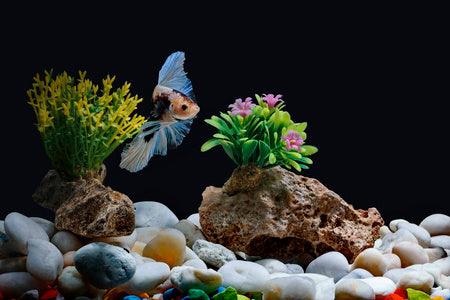Aquascaping, the practice of creating underwater landscapes, transcends mere fishkeeping to become a form of art where water, flora, and fauna blend harmoniously. This immersive guide introduces you to the captivating world of aquascaping, offering insights and tips on how to transform your aquarium into a living masterpiece.
Unveiling the Canvas: Understanding Aquascaping
Aquascaping is not just about placing plants and rocks in an aquarium; it's about invoking emotion and creating a natural, aquatic ecosystem. This art form takes inspiration from terrestrial landscapes, fantastical scenes, or even abstract compositions, reproducing them on a miniature, underwater scale.
Styles of Aquascaping
There are several styles, each with its unique characteristics and requirements:
- Nature Aquarium: Emphasizing the replication of natural landscapes, this style focuses on the aesthetic placement of rocks, wood, and live plants to create a balanced, serene aquatic scene.
- Iwagumi: A minimalist approach that highlights the strategic placement of stones as its main feature, complemented by low-growing plants to accentuate the stones' form and structure.
- Dutch Aquarium: Characterized by its lush, plant-dominant setup, the Dutch style is all about the vibrant, dense arrangement of various plant species, often in contrasting colors and textures.
- Biotope Aquarium: This style seeks to accurately replicate specific natural aquatic habitats, including the fish species that inhabit them, emphasizing ecological accuracy over aesthetic design.
Essential Elements of Aquascaping
Substrate
The foundation of any aquascape, the substrate, supports plant life, hosts beneficial bacteria, and contributes to the overall aesthetic. Options range from nutrient-rich soils to gravel and sand, depending on your aquascape's requirements.
Plants
Live plants are vital, not just for their beauty but for maintaining the ecosystem's health by oxygenating the water and providing shelter. Choosing the right plants is crucial for the harmony and balance of your aquascape.
Hardscape Materials
Rocks, driftwood, and other hardscape materials form the backbone of your design, offering structure and contrast. The placement of these elements is critical in guiding the viewer's eye and establishing the layout's flow.
Lighting
Proper lighting is essential for plant growth and highlighting the aquascape's beauty. LED lights with adjustable intensity and spectrum can cater to your plants' needs while enhancing the visual impact of your aquarium.
Water Quality and Filtration
Maintaining pristine water conditions is crucial for the health of your aquatic plants and animals. A high-quality filter and regular water changes keep the ecosystem balanced and thriving.
Tips for Beginner Aquascapers
- Start Simple: Begin with a single style and a manageable tank size. Nature Aquariums and Iwagumi are great starting points for beginners.
- Research: Understand the needs of your chosen plants and fish, ensuring compatibility and optimal growth conditions.
- Plan Your Layout: Sketch your design before starting. Consider the rule of thirds for a natural, appealing composition.
- Patience is Key: Aquascaping is an evolving art. Plants grow, layouts mature, and designs may change. Enjoy the process as much as the result.
Conclusion: A Portal to Nature
Aquascaping offers a unique blend of creativity, gardening, and aquarium keeping, inviting both the aquarist and onlooker into a mesmerizing, tranquil world. Whether you aim to recreate a slice of the Amazon River or a rugged, mountainous landscape, aquascaping is your portal to the unmatched beauty of nature, submerged. Start your journey today, and transform your aquarium into a living, breathing work of art with the help of Petfection Corner.



